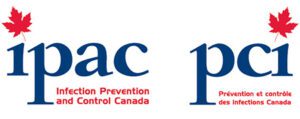ERMI tests…what are they?
ERMI Testing
ERMI tests…what are they?
ERMI is a molecular based test that is being pushed by a select few labs, doctors and some allied health practitioners and water damage assessors as the latest and best method to quantify human exposure to mould. The test stands for the Environmental Relative Moldiness Index and although it’s been patented by the U.S. Environmental Protection Agency it has not been validated for public use.
Requests for ERMI testing have increased dramatically lately. Clients often hear about the testing from a medical provider. Typically these providers, while well-intentioned, have a very limited understanding of the test they are recommending. The purpose of this article is to clarify the situations when ERMI testing is useful.
If you’d rather skip the technical explanation, the short answer is easy. The EPA states that ERMI testing should only be used for research purposes, (see link https://www.epa.gov/sites/production/files/2015-09/documents/20130822-13-p-0356.pdf . It was not designed to evaluate the main point of concern for most homeowners – the current level of mold spores in the air and the potential health exposure. But let’s examine why ERMI suffers from these limitations.
In fact the EPA has made is very clear that labs should not be selling this at all to consumers!
There should be warning bells sounding if you have been encouraged to use this test or if your clinical outcome or insurance or indoor air quality case has been determined using ERMI.

ERMI testing lacks quantifiable sampling
It’s easiest to understand the limitations of ERMI testing by comparing it to the standard test used for IAQ inspections, the non-viable air sample. Non-viable samplers pull air for a given period of time (often 3-5 minutes) at a set air flow rate. This produces a consistent quantity of air across the sample media. By measuring the exact same volume of air on every sample, we’re able to compare different samples with a high degree of confidence.
ERMI testing is very different. The sampling quantity is highly variable. Many labs are now promoting a Swiffer style sampling technique to collect the dust. As you can imagine, it is extremely difficult to quantify the sampling of a Swiffer. All samples would have to be taken with the exact same wiping pressure and the exact same square inches of the surface. Additionally, the smoothness of the surface would yield very different results (i.e. high gloss trim paint vs. matte finish). These are impossible factors to quantify. Without a reliable, repeatable testing technique, it’s very difficult to draw any conclusion from the results.
ERMI is unable to determine current conditions
Let’s imagine for a moment that a rigorous, quantifiable technique could be found. The results still cannot tell us anything about the current conditions. Unlike air sampling, ERMI testing uses settled dust as the sample material. Unfortunately, there’s no way to know how much time has transpired since the surface was last cleaned. Was it 6 weeks, 6 months? The difference in time could be enormous, which would yield wildly different results.
Ah, but what if a relative (percent) approach is used? One could compare the ratio of spores to dust or other particulates, which would theoretically provide good results, regardless of the time frame. But there is another problem. You cannot determine when the elevated mold spores occurred.
Let’s say the home had no mold problems for the last 2 months. However, there was a 2 day period 3 months ago when a large amount of mold spores were released when the homeowner opened a moldy tent inside the home. Or perhaps the outside air had a high quantity of mold spores during a one week period and the windows were left open. The elevated mold spores were clearly not part of an ongoing mold issue. But they would show up in the ERMI sample.
Or consider a home where the sampling location (door trim) hadn’t been cleaned in 6 years. During the first 5.5 years, the home had no mold problems. 6 months ago, a much larger family moved into the home. They kept the heat low and didn’t use the bath fans. Mold levels spiked quickly and remained high. Because this only represents 1/12 of the timeframe of the sample, the critical recent spike in mold would be lost.
Challenges with interpreting ERMI results
Yet another challenge related to ERMI is the difficulty in interpreting the results. One of the biggest problems is the way the formula treats outdoor spores. Without delving too deeply into the technical aspects, the formula groups mold spores into those that typically grow outdoors, and those that are often associated with water damage. Unfortunately, this is an impossible distinction. Cladosporium, for example, is one of the most common types of mold growth found with indoor water damage. Yet the ERMI formula places it as an “outdoor mold spore”. This is true as well. Cladosporium is a rather productive mold and it’s found both indoors and outdoors. Therefore, if a home had a high amount of Cladosporium growing indoors, these would actually be subtracted from the data and the house would receive a clean bill of health.
When is ERMI testing useful?
This doesn’t mean the ERMI testing is worthless. It can be effective when trying to determine the long term history of a home, which was the original intent. The test was designed to examine the settled dust beneath carpeting to determine if childhood exposure to mold is correlated to the development of health problems (asthma, allergies).
Take a look at the documents that highlight the risks from this technology and make up your own mind.
- Report: Public May Be Making Indoor Mold Cleanup Decisions Based on EPA Tool Developed Only for Research Applications
Report #13-P-0356, August 22, 2013 - https://www.epa.gov/office-inspector-general/report-public-may-be-making-indoor-mold-cleanup-decisions-based-epa-tool
- The Environmental Relative Moldiness Index: A Research Tool Fact Sheet
- https://www.epa.gov/air-research/environmental-relative-moldiness-index-research-tool-fact-sheet
There is nothing that ERMI can do that traditional indoor air quality metrics like spore traps and viable sampling can’t already do with far greater accuracy.
In closing, it is also important to note that a very recent paper has also flagged the very real risk that molecular methods may not in fact identify what they are supposed to be identifying.
- Ten reasons why a sequence-based nomenclature is not useful for fungi anytime soon. Source: IMA Fungus, Volume 9, Number 1, June 2018, pp. 177-183(7)
The ERMI method is also expensive and reductionist in that reports are often based on a single sample collected across multiple rooms of a home. This means there is use of non-uniform sample size collection and a host of other methodological problems.
Interpretations can be misleading and extrapolations commonly ignore the small study effect and the inherent lack of statistical analysis or significance testing. The entire point of indoor air quality testing and water damage inspections is to use collected data to practically inform the occupants on how best to remediate water damaged areas. Tests like ERMI therefore don’t determine an accurate exposure history to mould.
The fact remains that even if ERMI does red flag a mould problem this does not easily allow the occupants to know which area(s) to remediate since the units of measure are not compatible with other established indoor air quality tests for mould and methods for visual inspection that do have standards and guidelines for interpretation.
The academic literature also backs up these concerns. A recent paper published in the European Respiratory Review looked at the results on ERMI where they “studied its association with asthma: the authors concluded that the ERMI studies do not prove that there is a causal relationship between mould exposure and the development or exacerbation of asthma”. [Source: Caillaud, D., Leynaert, B., Keirsbulck & Nadif, R. (2018). Indoor mould exposure, asthma and rhinitis: findings from systematic reviews and recent longitudinal studies. Eur Respirator Rev. 27: 170137].


Maple Leaf Mold Inc. is a certified mold / asbestos removal and biological disinfection / air analysis company located in Toronto that uses certified IICRC technicians for all testing and remediation projects.
We are a professionally licensed firm experienced in testing, verifying and removing Mold / Asbestos / Lead and other environmental contaminants as well as providing disinfection services to control and kill biological contaminants.
Call 416-254-7256 to talk with us about your issue anytime.






